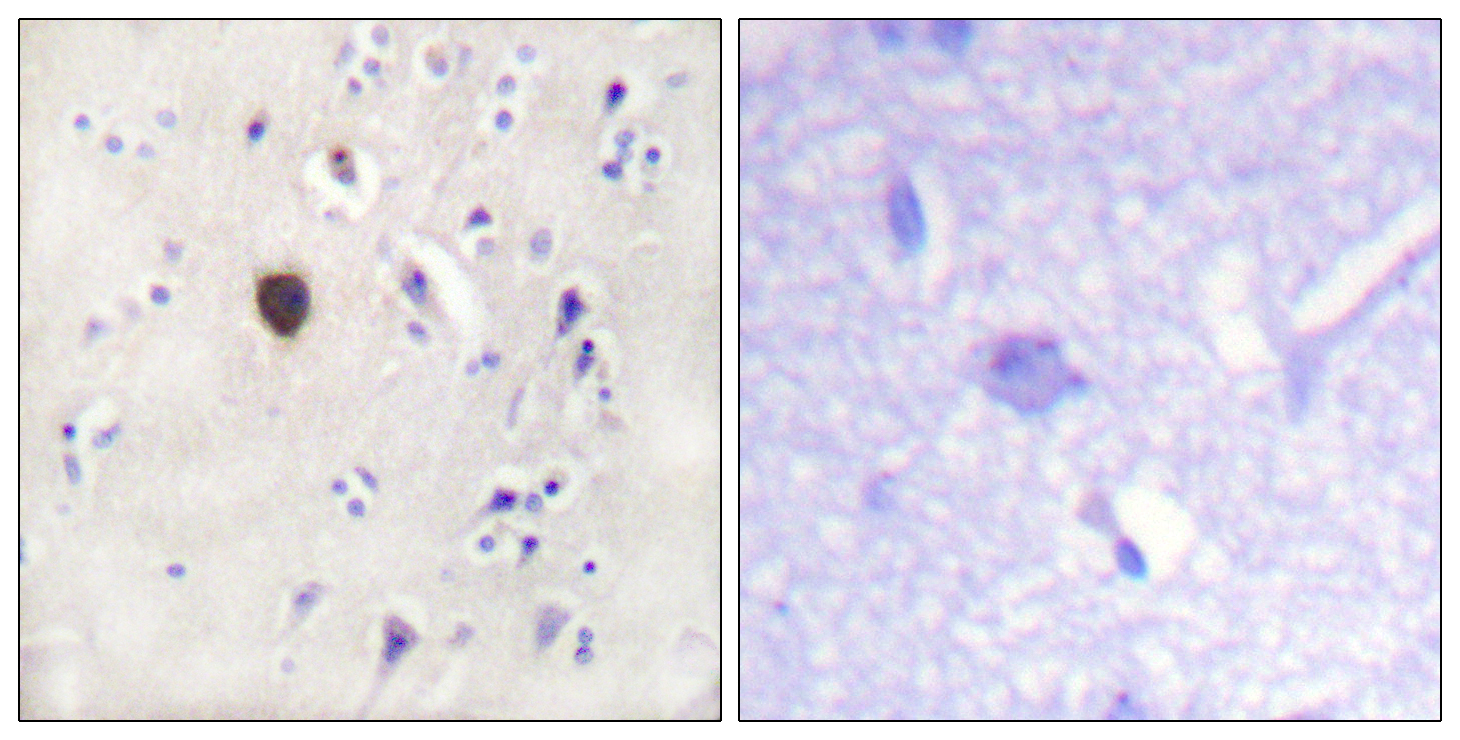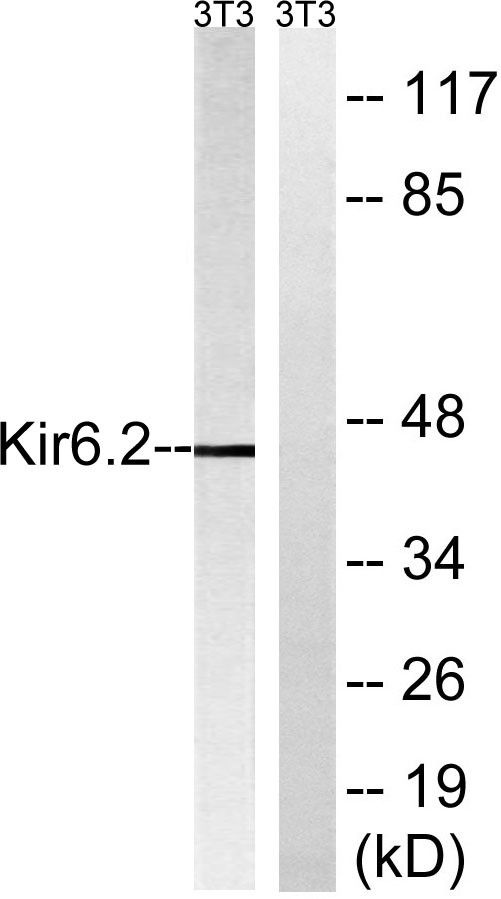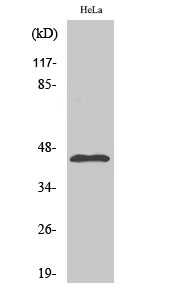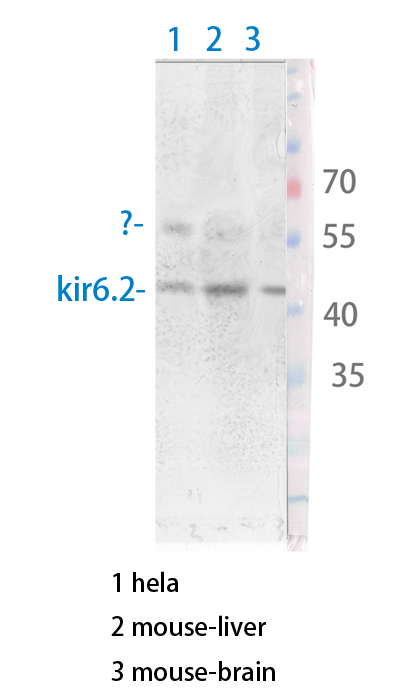产品名称
KIR6.2 Rabbit Polyclonal Antibody
别名
KCNJ11; ATP-sensitive inward rectifier potassium channel 11; IKATP; Inward rectifier K(+) channel Kir6.2; Potassium channel; inwardly rectifying subfamily J member 11
蛋白名称
ATP-sensitive inward rectifier potassium channel 11
存储缓冲液
Liquid in PBS containing 50% glycerol, 0.5% BSA and 0.02% New type preservative N.
Human Gene Link
http://www.ncbi.nlm.nih.gov/sites/entrez?db=gene&term=3767
Human Swissprot No.
Q14654
Human Swissprot Link
http://www.uniprot.org/uniprotkb/Q14654/entry
Mouse Gene Link
http://www.ncbi.nlm.nih.gov/sites/entrez?db=gene&term=16514
Mouse Swissprot No.
Q61743
Mouse Swissprot Link
http://www.uniprot.org/uniprot/Q61743
Rat Gene Link
http://www.ncbi.nlm.nih.gov/sites/entrez?db=gene&term=83535
Rat Swissprot Link
http://www.uniprot.org/uniprot/P70673
免疫原
The antiserum was produced against synthesized peptide derived from human Kir6.2. AA range:190-239
特异性
KIR6.2 Polyclonal Antibody detects endogenous levels of KIR6.2 protein.
稀释度
WB 1:500 - 1:2000. IHC 1:100 - 1:300. IF 1:200 - 1:1000. ELISA: 1:10000. Not yet tested in other applications.
宿主
Polyclonal, Rabbit,IgG
背景介绍
Potassium channels are present in most mammalian cells, where they participate in a wide range of physiologic responses. The protein encoded by this gene is an integral membrane protein and inward-rectifier type potassium channel. The encoded protein, which has a greater tendency to allow potassium to flow into a cell rather than out of a cell, is controlled by G-proteins and is found associated with the sulfonylurea receptor SUR. Mutations in this gene are a cause of familial persistent hyperinsulinemic hypoglycemia of infancy (PHHI), an autosomal recessive disorder characterized by unregulated insulin secretion. Defects in this gene may also contribute to autosomal dominant non-insulin-dependent diabetes mellitus type II (NIDDM), transient neonatal diabetes mellitus type 3 (TNDM3), and permanent neonatal diabetes mellitus (PNDM). Multiple alternatively spliced trans
组织表达
Brain,Breast,Ovary,Placenta,Spleen,
细胞定位
Membrane; Multi-pass membrane protein.
信号通路
Type II diabetes mellitus;
功能
disease:Defects in KCNJ11 are a cause of permanent neonatal diabetes mellitus (PNDM) [MIM:606176]. PNDM is a rare form of diabetes characterized by insulin-requiring hyperglycemia that is diagnosed within the first months of life.,disease:Defects in KCNJ11 are the cause of familial hyperinsulinemic hypoglycemia type 2 (HHF2) [MIM:601820]; also known as persistent hyperinsulinemic hypoglycemia of infancy (PPHI) or hyperinsulinism. HHF2 is the most common cause of persistent hypoglycemia in infancy and is due to defective negative feedback regulation of insulin secretion by low glucose levels. It causes nesidioblastosis, a diffuse abnormality of the pancreas in which there is extensive, often disorganized formation of new islets. Unless early and aggressive intervention is undertaken, brain damage from recurrent episodes of hypoglycemia may occur.,disease:Defects in KCNJ11 are the cause of transient neonatal diabetes mellitus type 3 (TNDM3) [MIM:610582]. Neonatal diabetes mellitus, defined as insulin-requiring hyperglycemia within the first month of life, is a rare entity. In about half of the neonates, diabetes is transient and resolves at a median age of 3 months, whereas the rest have a permanent form of diabetes. In a significant number of patients with transient neonatal diabetes mellitus, diabetes type 2 appears later in life. The onset and severity of TNDM3 is variable with childhood-onset diabetes, gestational diabetes or adult-onset diabetes described.,disease:Defects in KCNJ11 may contribute to non-insulin-dependent diabetes mellitus (NIDDM), also known as diabetes mellitus type 2.,function:This receptor is controlled by G proteins. Inward rectifier potassium channels are characterized by a greater tendency to allow potassium to flow into the cell rather than out of it. Their voltage dependence is regulated by the concentration of extracellular potassium; as external potassium is raised, the voltage range of the channel opening shifts to more positive voltages. The inward rectification is mainly due to the blockage of outward current by internal magnesium. Can be blocked by extracellular barium.,similarity:Belongs to the inward rectifier-type potassium channel family.,subunit:Associates with ABCC8/SUR.,
纯化
The antibody was affinity-purified from rabbit antiserum by affinity-chromatography using epitope-specific immunogen.




.jpg)

